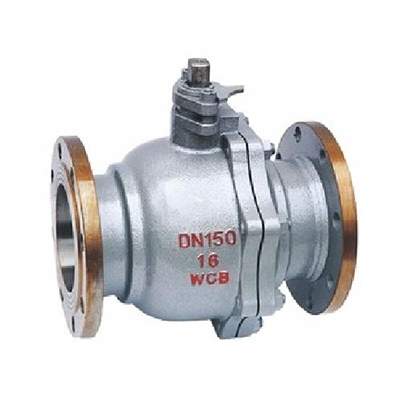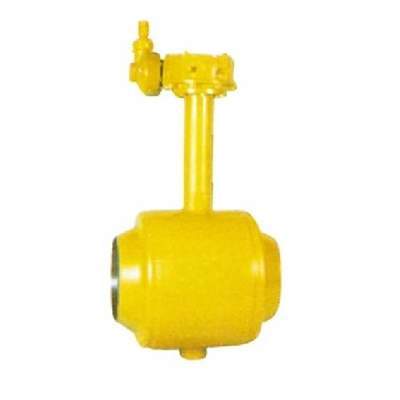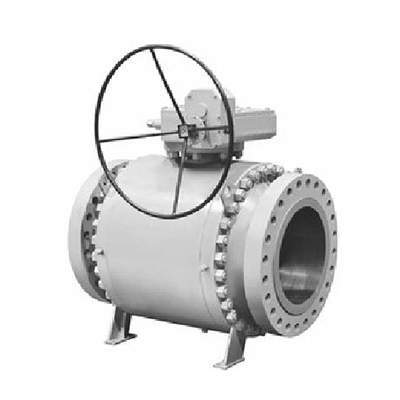Welcome to My Blog!
Before we dive into the content, I’d love for you to join me on my social media platforms where I share more insights, engage with the community, and post updates. Here’s how you can connect with me:
Facebook:https://www.facebook.com/profile.php?id=61563865935136
Now, let’s get started on our journey together. I hope you find the content here insightful, engaging, and valuable.
Introduction

Shutoff ball valves are essential components in various industrial and domestic applications, providing reliable fluid control. They are known for their ease of use and ability to create a tight seal. This comprehensive guide delves into the intricacies of shutoff ball valves, covering their types, applications, working principles, advantages, disadvantages, installation, maintenance, and frequently asked questions. Understanding these aspects will help ensure proper selection and long-term performance of your valve.
What is a Shutoff Ball Valve?
A shutoff ball valve is a quarter-turn valve that controls the flow of fluids using a spherical ball with a bore through its center. When the valve is open, the bore aligns with the pipeline, allowing fluid to flow through. When closed, the ball rotates 90 degrees, blocking the flow. Shutoff ball valves are known for their quick operation, tight sealing, and durability, making them a popular choice for many applications. Their simple design contributes to their reliability and ease of maintenance.
Types of Shutoff Ball Valves
Shutoff ball valves are available in various configurations, each designed for specific applications:
- Two-way ball valves: These are the most common type, used for simple on/off control. They are ideal for basic flow isolation.
- Three-way ball valves: These valves have three ports, allowing for flow diversion or mixing. They can be used to direct flow to different paths.
- Multi-port ball valves: These valves have more than three ports, enabling complex flow control. They are often used in more specialized applications.
Applications of Shutoff Ball Valves

Shutoff ball valves find applications in diverse industries and ttings:
- Oil and gas: For controlling flow in pipelines and refineries. They are crucial for safety and efficiency in these demanding environments.
- Chemical processing: For handling various chemicals and fluids. The valve material must be compatible with the chemicals being used.
- Water treatment: For regulating water flow in treatment plants. They help control the various stages of the water treatment process.
- HVAC systems: For controlling refrigerant flow in heating and cooling systems. They ensure proper temperature regulation in these systems.
- Plumbing: For shutoff in residential and commercial water lines. They are commonly used for isolating water supply to fixtures.
Working Principle of a Shutoff Ball Valve
The working principle of a shutoff ball valve is straightforward:
- In the open position, the ball’s bore aligns with the pipeline, allowing unobstructed flow. This provides minimal resistance to the fluid.
- When the handle is turned 90 degrees, the ball rotates, and the solid part of the sphere blocks the flow. This creates a tight seal to prevent leakage.
- The valve provides a tight seal, preventing leakage when closed. This is a key advantage of ball valves.
Advantages of Using Shutoff Ball Valves
Shutoff ball valves offer several advantages:
- Quick operation: They require only a quarter turn to open or close. This makes them easy to operate and efficient.
- Tight sealing: They provide a reliable leak-free shutoff. This is essential for preventing fluid loss and ensuring safety.
- Durability: They can withstand high pressures and temperatures. This makes them suitable for a wide range of applications.
- Low maintenance: They require minimal maintenance. This reduces downtime and maintenance costs.
- Versatility: They are available in various configurations and materials. This allows them to be used in diverse applications.
Disadvantages of Using Shutoff Ball Valves
While shutoff ball valves offer numerous benefits, they also have some limitations:
- Not suitable for throttling: They are not ideal for regulating flow as they can cause turbulence and wear. Other valve types are better suited for throttling.
- Potential for water hammer: Quick closure can cause pressure surges in pipelines. This can damage pipes and other components.
How to Install a Shutoff Ball Valve
Installing a shutoff ball valve involves these steps:
- Ensure the pipeline is depressurized and drained. This is a crucial safety step before any valve work.
- Clean the pipe threads and apply Teflon tape. This helps ensure a leak-free seal.
- Thread the valve onto the pipe, ensuring proper alignment. Avoid cross-threading, which can damage the valve.
- Tighten the valve securely, avoiding over-tightening. Over-tightening can damage the valve or the pipe.
Maintaining Your Shutoff Ball Valve
Maintaining a shutoff ball valve is simple:
- Regularly inspect for leaks or damage. Early detection of problems can prevent more serious issues.
- Lubricate the valve stem periodically. This ensures smooth operation of the valve.
- Replace any worn-out seals or components. This will help prolong the life of the valve.
Choosing the Right Shutoff Ball Valve
Selecting the appropriate shutoff ball valve involves considering these factors:
- Fluid compatibility: Ensure the valve material is compatible with the fluid being handled. This prevents corrosion and ensures valve longevity.
- Pressure and temperature rating: Choose a valve that can withstand the operating conditions. Exceeding these ratings can lead to valve failure.
- Size and connection type: Select the correct size and connection type for the pipeline. This ensures proper fit and flow.
- Application requirements: Consider specific needs such as flow rate and shutoff frequency. These factors will influence valve selection.
Shutoff Ball Valve Applications in Detail
Oil and Gas Industry
Shutoff ball valves are widely used in the oil and gas industry for various applications:
- Pipeline isolation: For isolating sections of pipelines during maintenance or emergencies. This allows for safe work on the pipeline.
- Wellhead control: For controlling flow from oil and gas wells. This is critical for regulating production.
- Refinery operations: For regulating flow in refining processes. Precise flow control is essential for efficient refining.
Chemical Processing Industry
Shutoff ball valves play a crucial role in chemical processing:
- Chemical transfer: For controlling the flow of various chemicals. The valve material must be compatible with the chemicals being handled.
- Process control: For regulating flow in chemical reactions and processes. Accurate flow control is essential for consistent product quality.
- Corrosive fluid handling: For handling corrosive chemicals with specialized materials. Specialized valve materials are needed to prevent corrosion.
Water Treatment Industry
Shutoff ball valves are essential in water treatment plants:
- Water flow regulation: For controlling water flow in different stages of treatment. This ensures efficient treatment processes.
- Backwash operations: For isolating and controlling flow during backwash cycles. Backwashing is essential for maintaining filter performance.
- Chemical dosing: For regulating the addition of chemicals in water treatment. Precise chemical dosing is crucial for water quality.
Shutoff Ball Valve Selection Guide

| Feature | Consideration |
|---|---|
| Material | Stainless steel, brass, PVC, etc. (Choose based on fluid compatibility and operating conditions) Consider the chemical properties of the fluid and the surrounding environment. |
| Size | Diameter of the pipeline (Ensure proper fit for optimal flow) A properly sized valve will minimize pressure drop and ensure efficient flow. |
| Pressure Rating | Maximum pressure the valve can withstand (Select based on system pressure) Operating the valve above its pressure rating can lead to failure and potential safety hazards. |
| Temperature Rating | Operating temperature range (Ensure compatibility with system temperature) Extreme temperatures can affect the performance and lifespan of the valve seals and other components. |
| Connection Type | Threaded, flanged, welded, etc. (Choose based on pipeline connection type) The connection type should match the pipeline for easy installation and a reliable seal. |
| Actuation | Manual, pneumatic, electric (Select based on operational needs) Manual valves are suitable for simple on/off control, while pneumatic and electric actuators are used for automated control. |
| Seal Material | Teflon, EPDM, Viton, etc. (Choose based on fluid compatibility and temperature) The seal material must be compatible with the fluid to prevent leaks and ensure a tight seal. |
| Flow Coefficient (Cv) | Measure of the valve’s flow capacity (Consider for optimal flow rates) The Cv value helps determine the valve’s ability to pass fluid and is important for system design. |
| Standards and Approvals | API, ANSI, ISO, etc. (Ensure compliance with relevant industry standards) Compliance with industry standards ensures the valve meets certain performance and safety requirements. |
Conclusion
Shutoff ball valves are versatile and reliable flow control devices widely used across industries. Understanding their types, applications, working principles, advantages, disadvantages, installation, and maintenance is crucial for selecting and using them effectively. By considering the factors outlined in this guide, you can make informed decisions and ensure optimal performance of your shutoff ball valves.
FAQ
What is the difference between a ball valve and a shutoff valve?
A ball valve is a type of shutoff valve that uses a ball with a bore to control flow. All ball valves are shutoff valves, but not all shutoff valves are ball valves.
How do I know if my ball valve is open or closed?
When the handle is aligned with the pipeline, the valve is open. When the handle is perpendicular to the pipeline, the valve is closed.
Can I use a ball valve to regulate flow?
While some ball valves can be used for throttling, they are not ideal for this purpose as they can cause turbulence and wear.
How often should I maintain my shutoff ball valve?
Regular inspections for leaks and lubrication of the valve stem are recommended. More frequent maintenance may be required depending on the application and operating conditions.
What are common issues with shutoff ball valves?
Common issues include leaks, difficulty in operation, and wear of seals or components.
